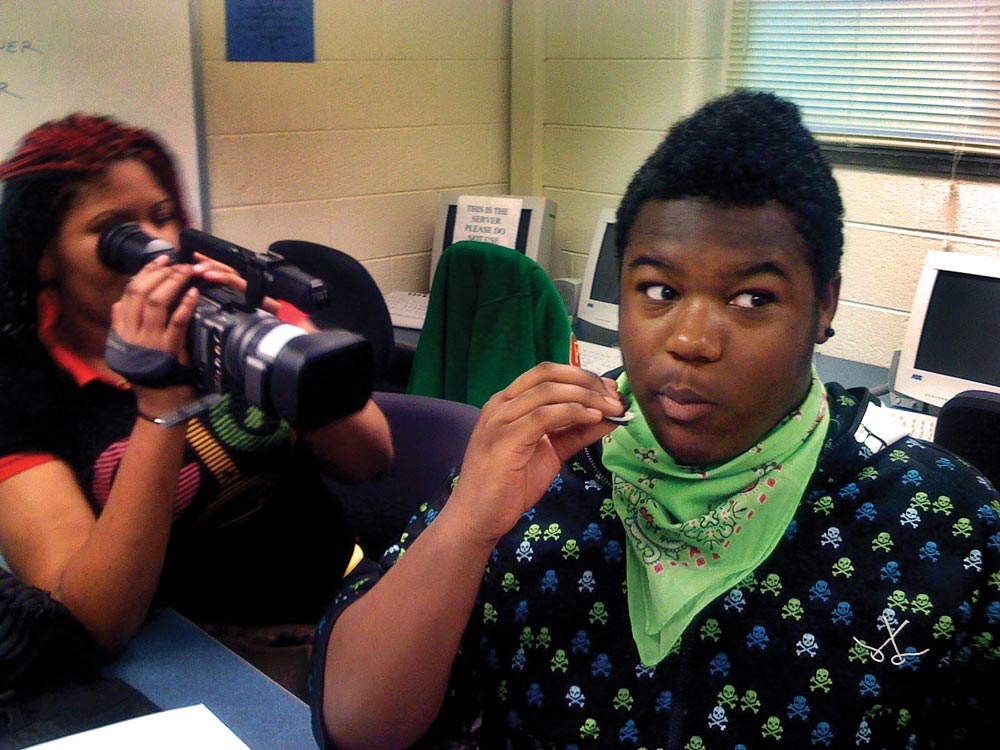Keeping it Reel
Light House puts young people behind the lens
Keeping It Reel from UVA Magazine on Vimeo.
Eighteen-year-old Quintin Franklyn’s debut short film, Sew What??, shows him in an alley in Charlottesville sitting at a sewing machine making brightly colored garments and tapestries. He blows on his hands every few minutes to warm them so he can keep the thread moving. Speaking directly to the camera, he says, “Sometimes to escape all the drama that’s going on, all the commotion, I try to take all the negativity and turn it into a positive, beautiful thing.” He pauses. “And I love to sew.”
Franklyn’s video is one of more than 125 documentary, dramatic and animated films made by youngsters at Light House, an independent media education center in Charlottesville. In 1999, a group of local artists including Shannon Worrell (Col ’90) and Kevin Everson, a studio arts teacher at UVA, began a small pilot workshop called “Video Diary.” Now Light House provides mentored workshops in digital filmmaking; a screening room; a DVD, VHS and book library; and exhibition opportunities.
“Our idea was that young people are the largest consumers of digital media, films and TV, but few of them are actually making it,” says Worrell. “It’s a language they are taught to hear and see but not speak. Light House offers an uncensored work environment, and real artists and filmmakers teach the workshops.”
T.T. Washington, one of the youth participants in a workshop at Friendship Court housing development, sets a camera on a tripod and adjusts several buttons and switches like a pro. “I’ve been doing Light House for five years,” she says. “At first, I just wrote interviews and learned the parts of the camera, but now I get to operate one.” She films a swing set, then a shot of a sidewalk and, after a patient wait, a bird taking flight.
“We wrote haikus and now we’re shooting,” explains Quanelius “Punky” Tinsley, Washington’s shooting partner. The images that they film will accompany a voice-over of the haikus that Tinsley and Washington wrote in their workshop.
Once the students finish shooting the haiku images, they will edit them into short films in one of Light House’s edit suites. “Kids tend to spend a lot of their lives watching TV,” says Light House director Sam Baker. “They look at the screen and say, ‘Oh that’s easy. I could make that.’ But once they break down the process, they see it’s something that’s hard but still accomplishable if they just take it piece by piece. That’s something they can apply to any challenge they come across.”
Film festivals around the country have invited Light House youth to screen and discuss their work. “Some of our films have been shown abroad and on CNN International,” says Worrell. Franklyn’s film was featured in an L.A. film festival, and recently Franklyn traveled to Ghana to film as part of a delegation from Charlottesville. At the end of his film, he talks about the future: “From where I came from to where I want to go is going to be a total change around. I want to be something strong. Something big.”
